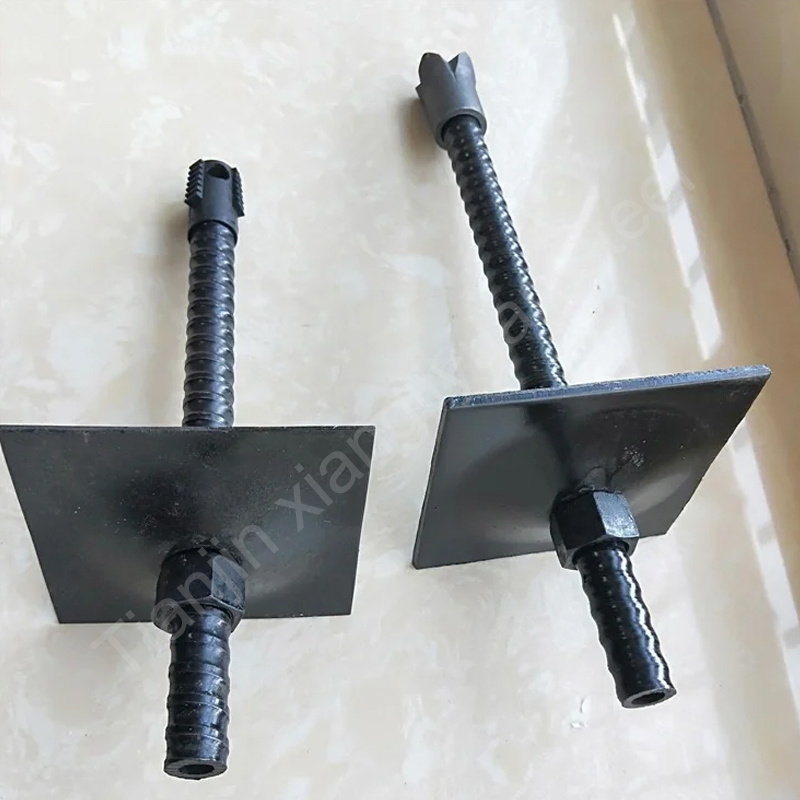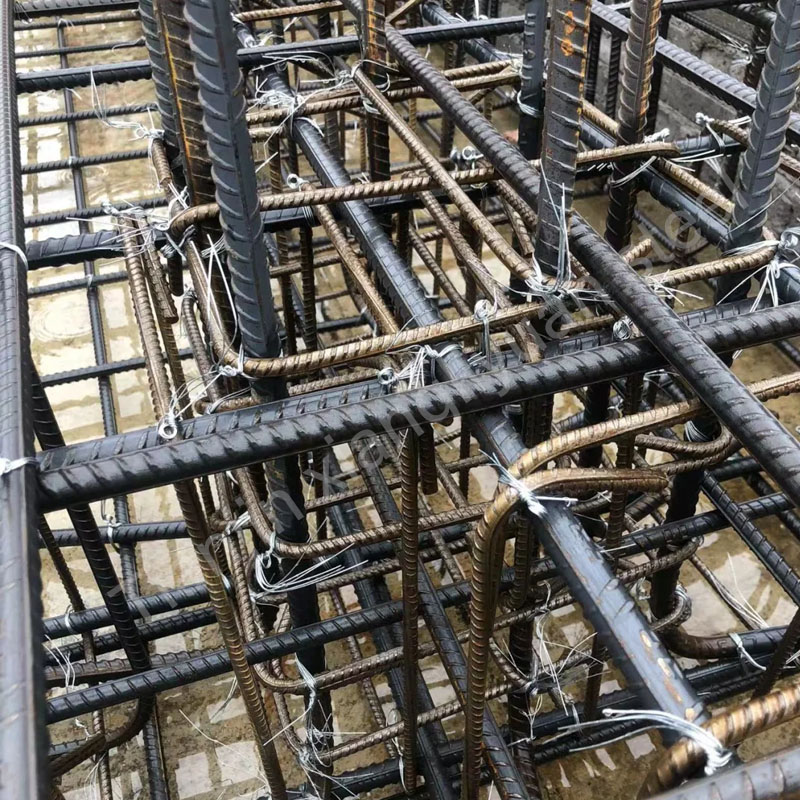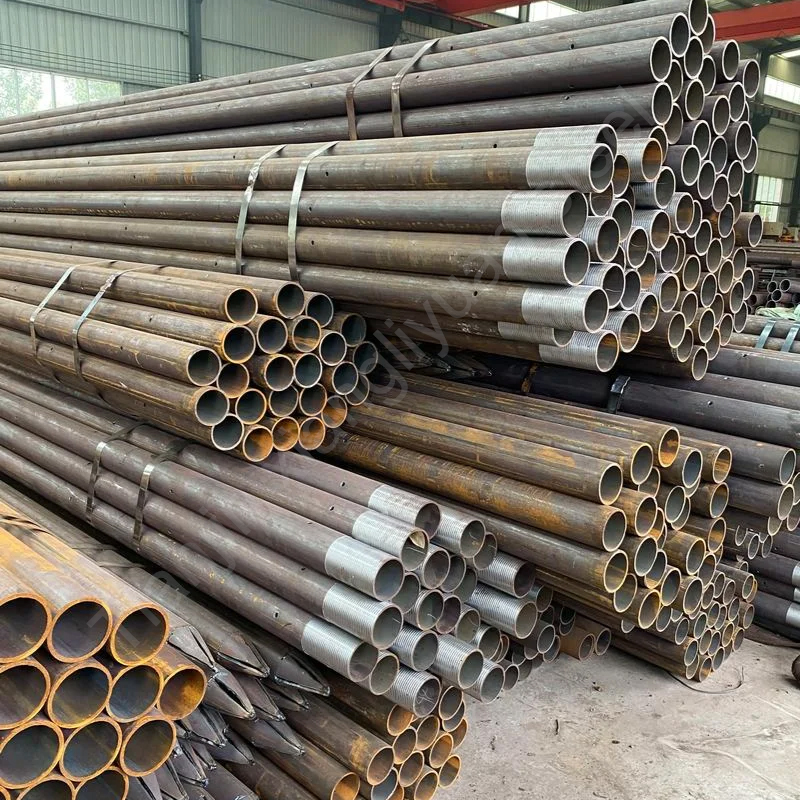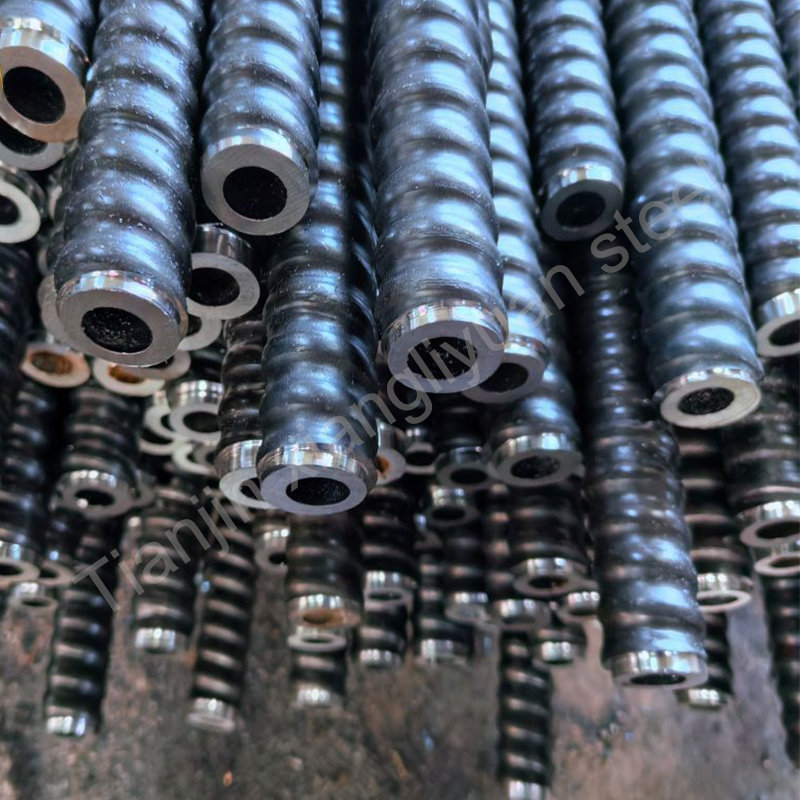Hollow anchor bars, also known as hollow anchor rods or hollow rock bolts, are critical components in geotechnical engineering and underground construction. These specialized steel bars feature a hollow core design, enabling simultaneous functions such as grout injection, tensioning, and drainage. Widely used in tunneling, mining, slope stabilization, and underground projects, hollow anchor bars provide unmatched versatility and structural reinforcement. This guide explores their materials, classifications, international standards, dimensions, and industrial applications.
1. Material Grades and Composition
Hollow anchor bars are manufactured from high-strength steel alloys to withstand extreme loads and corrosive environments. Common materials include:
Carbon Steel (Grades Q345B, S355JR, ASTM A615)
Ideal for general-purpose anchoring, offering tensile strengths of 490–620 MPa.
Alloy Steel (40Cr, AISI 4140, EN 1.7225)
Heat-treated for enhanced durability (800–1,000 MPa tensile strength), suitable for heavy-load mining and tunneling.
Stainless Steel (SS304, SS316, DIN 1.4301)
Used in corrosive environments like coastal areas or chemical plants.
The hollow core (typically 8–20 mm inner diameter) allows for grout injection or resin cartridges, ensuring full bonding with surrounding rock/soil.
2. Classifications of Hollow Anchor Bars
Hollow anchor bars are categorized based on design and application:
A. By Structure
Full-Length Bonded Hollow Anchor Bars
Grout fills the entire borehole for uniform load distribution.
Common in permanent stabilization projects.
End-Anchored Hollow Bars
Mechanical or resin anchors fix the bar’s end for rapid installation.
Used in temporary excavations.
Self-Drilling Hollow Bars
Integrated drill bit allows drilling and grouting in one step.
Ideal for unstable rock formations.
B. By Surface Profile
Smooth Hollow Bars: Cost-effective for light-duty applications.
Ribbed/Threaded Hollow Bars: Improved bonding with grout (e.g., R25, R32 threads).
3. International Standards and Certifications
Hollow anchor bars comply with region-specific standards to ensure quality and interoperability:
| Country/Region | Standard | Key Specifications |
|---|---|---|
| China | GB/T 20934, YB/T 4654 | Covers grades like Q345B, diameters 25–51 mm. |
| Europe | EN 14195, DIN 488 | Defines S355JR, rib geometry, and load capacities. |
| USA | ASTM F432, ASTM A615 | Specifies alloy compositions and testing methods. |
| Australia | AS 4672 | Certifies corrosion resistance for mining. |
| Japan | JIS G3112 | Focuses on seismic-resistant designs. |
4. Standard Sizes and Dimensions
Hollow anchor bars are available in customizable lengths and diameters:
|
Inner Diameter (mm) | Wall Thickness (mm) | Common Lengths (m) | Tensile Strength (MPa) | |
|---|---|---|---|---|---|
| 25 | 10 | 3 | 1.0–6.0 | 490–620 | |
| 32 | 14 | 4 | 3.0–12.0 | 620–800 | |
| 38 | 16 | 5 | 6.0–12.0 | 800–1,000 | |
| 51 | 20 | 6 | 6.0–12.0 | 1,000–1,200 |
Note: Custom threads (e.g., R25, R38) and couplings are available for specific projects.
5. Key Applications of Hollow Anchor Bars
A. Tunnel Construction
Stabilize tunnel roofs and walls in soft ground or fractured rock.
Grout injection via the hollow core seals fractures and prevents water ingress.
B. Mining Support
Reinforce mine shafts and stopes against rockbursts.
Self-drilling bars simplify installation in hard rock.
C. Slope Stabilization
Prevent landslides by anchoring unstable slopes to bedrock.
Drainage function reduces hydrostatic pressure.
D. Underground Infrastructure
Secure foundations for subway systems, parking garages, and pipelines.
6. Selecting the Right Hollow Anchor Bar
Consider these factors for optimal performance:
Ground Conditions: Soft soil requires ribbed bars for better adhesion.
Load Requirements: High-stress areas demand alloy steel (≥800 MPa).
Corrosion Risk: Stainless steel or epoxy-coated bars for coastal zones.
Installation Speed: Self-drilling bars reduce labor time.
7. Maintenance and Inspection
Regularly check for corrosion or deformation.
Re-tension bars if settlement occurs.
Follow ASTM F432 guidelines for load testing.
Hollow anchor bars are indispensable in modern geotechnical engineering, combining strength, adaptability, and multifunctional design. By selecting the appropriate material grade, size, and standard-compliant product, engineers ensure long-term stability in challenging environments. As global infrastructure demands grow, hollow anchor technology continues to evolve, offering innovative solutions for underground and slope stabilization projects.





